Bathroom concrete countertops have emerged as a stylish and durable option for modern homes, offering a unique blend of industrial chic and timeless elegance. One of the main attractions of concrete countertops is their versatility. Unlike natural stone, which is limited by what the earth provides, concrete can be customized to fit virtually any design vision. It can be molded into various shapes and sizes, accommodating unique bathroom layouts and incorporating features like integrated sinks or decorative inlays. The color and texture of concrete countertops can also be customized, with options ranging from smooth and polished to rough and textured, allowing homeowners to create a countertop that perfectly complements their bathroom’s aesthetic.
Another significant advantage of concrete countertops is their durability. Concrete is a robust material that can withstand daily wear and tear, making it an excellent choice for busy bathrooms. Unlike some other countertop materials, concrete is highly resistant to scratches and dents, ensuring that it retains its appearance even in high-traffic areas. Moreover, concrete countertops are heat-resistant, which means they won’t be damaged by hot hair tools like curling irons or straighteners. This resistance to both physical and thermal stress makes concrete a practical choice for a bathroom countertop, where durability is often a key consideration.
One of the most appealing aspects of concrete countertops is their ability to be personalized. From the color to the finish, almost every aspect of a concrete countertop can be tailored to fit the homeowner’s preferences. For example, pigments can be added to the concrete mix to create virtually any color, allowing the countertop to either blend seamlessly with the bathroom’s color scheme or stand out as a bold statement piece. Additionally, the surface of the concrete can be finished in various ways, from a high-gloss polish that mimics the look of marble to a matte finish that provides a more subdued, natural appearance. This level of customization is difficult to achieve with other materials, making concrete a unique option for those looking to create a one-of-a-kind bathroom.
Concrete countertops are also an eco-friendly choice, especially when compared to other materials like granite or quartz. Concrete is made from readily available natural materials, and the production process has a relatively low environmental impact. Furthermore, concrete countertops can be made with recycled materials, such as glass or metal, which are embedded in the surface for a distinctive look. This use of recycled content not only adds to the countertop’s aesthetic appeal but also makes it a more sustainable option. For environmentally conscious homeowners, the ability to create a beautiful, functional countertop while minimizing their environmental footprint is a significant advantage.
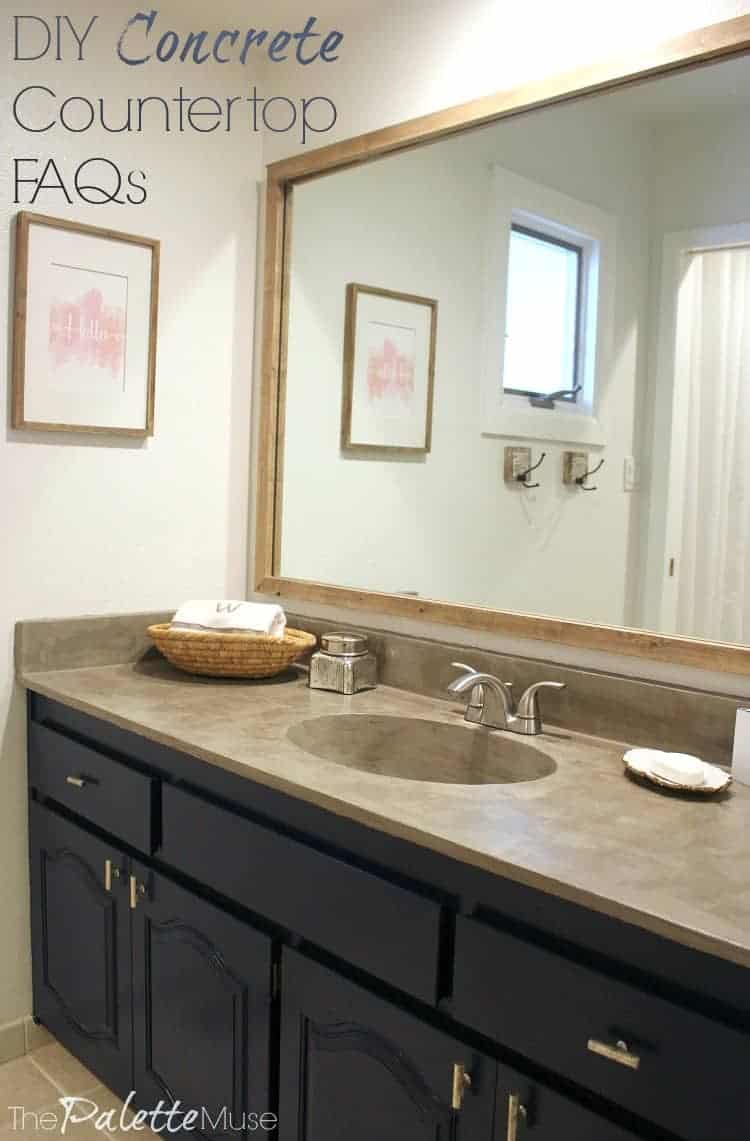
Despite their many benefits, concrete countertops do require some maintenance to keep them looking their best. Concrete is naturally porous, which means it can absorb water and other liquids if not properly sealed. To prevent staining and water damage, it’s important to seal concrete countertops regularly. A good sealer will create a barrier on the surface of the concrete, protecting it from moisture, stains, and bacteria. In addition to sealing, it’s also important to clean concrete countertops with gentle, pH-neutral cleaners to avoid damaging the sealer or the concrete itself. With proper care, a concrete countertop can last for many years, maintaining its beauty and functionality over time.
One of the unique features of concrete countertops is the ability to incorporate custom elements into the design. For example, homeowners can embed objects like stones, shells, or even pieces of glass into the surface of the countertop, creating a truly personalized look. These inlays can add color, texture, and interest to the countertop, making it a focal point in the bathroom. Additionally, integrated sinks are a popular feature in concrete countertops. Instead of installing a separate sink, the sink is formed as part of the countertop, creating a seamless, modern look. This integration not only adds to the aesthetic appeal but also makes cleaning easier, as there are no seams or joints where dirt and grime can accumulate.
Another advantage of concrete countertops is their adaptability to various bathroom styles. Whether the bathroom is designed with a sleek, modern aesthetic or a rustic, farmhouse vibe, concrete can be customized to complement the overall design. For example, a polished concrete countertop with clean lines and a smooth finish might be the perfect addition to a contemporary bathroom, while a rougher, more textured concrete surface could enhance the organic, natural feel of a rustic space. The versatility of concrete allows it to be used in a wide range of design contexts, making it a popular choice for both new construction and bathroom remodels.
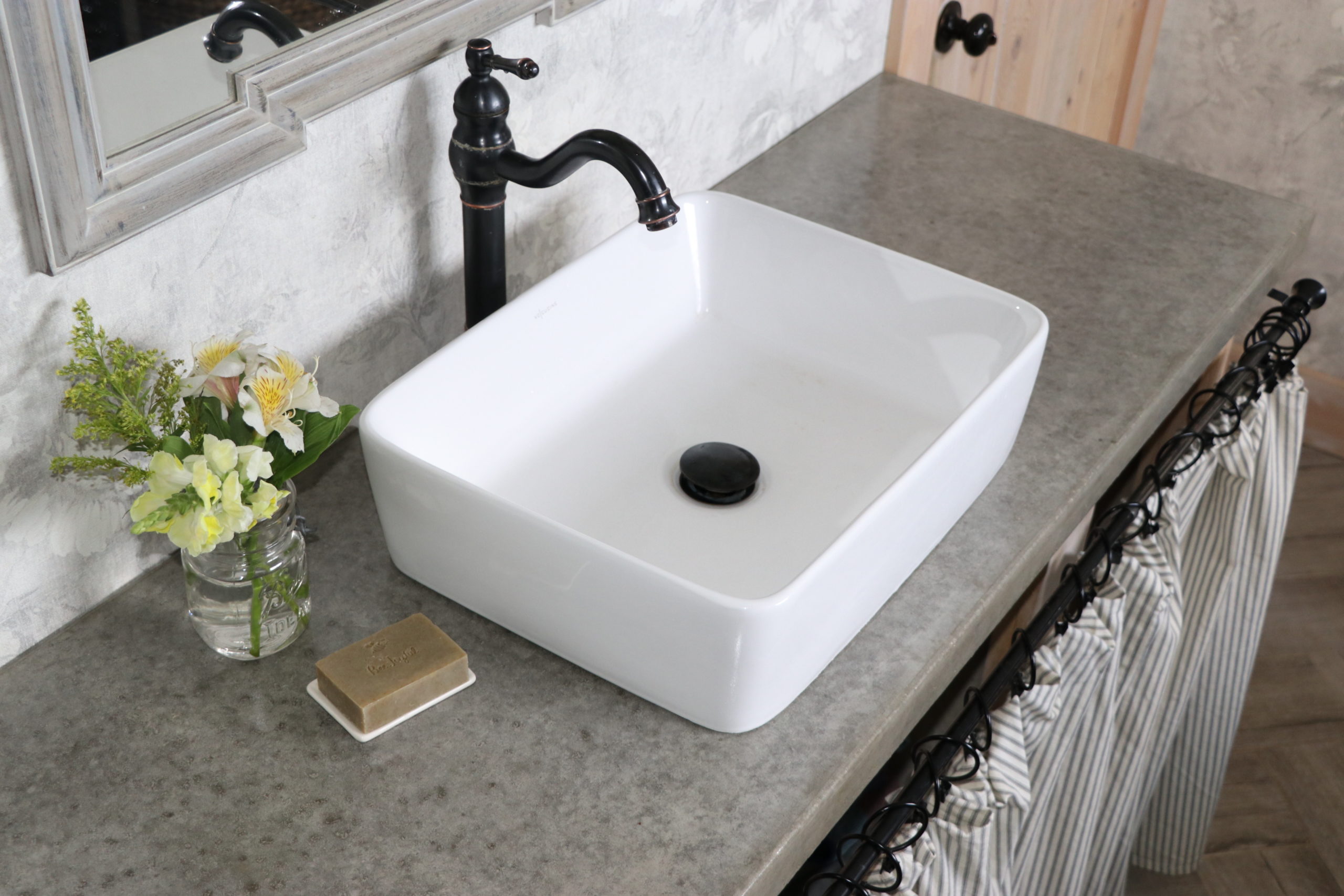
While concrete countertops are often associated with an industrial aesthetic, they can also be used to create a luxurious feel in the bathroom. When combined with high-end fixtures and finishes, a concrete countertop can add a sense of sophistication and elegance to the space. For instance, a concrete countertop with a polished finish and a custom color could be paired with a sleek, modern faucet and a statement mirror to create a bathroom that feels both contemporary and luxurious. The ability to pair concrete with a variety of other materials, such as metal, glass, or wood, further enhances its versatility and allows for the creation of a truly unique space.
The process of creating a concrete countertop is highly customizable, which is both an advantage and a challenge. On the one hand, the ability to design a countertop to fit specific dimensions and aesthetic preferences means that homeowners can get exactly what they want. On the other hand, this customization requires a high level of skill and craftsmanship. Concrete countertops are often made by hand, and the quality of the finished product depends on the expertise of the fabricator. It’s important to work with a skilled professional who has experience with concrete countertops to ensure that the final product meets your expectations.
Another factor to consider when choosing concrete countertops is the weight of the material. Concrete is a very heavy material, and countertops made from concrete can weigh significantly more than those made from other materials like laminate or solid surface. This weight means that the underlying cabinetry must be strong enough to support the countertop without sagging or breaking. In some cases, additional reinforcement may be required to ensure that the cabinets can handle the weight of the concrete. This is an important consideration during the planning and design phase of the bathroom remodel, as it may affect the overall budget and timeline of the project.
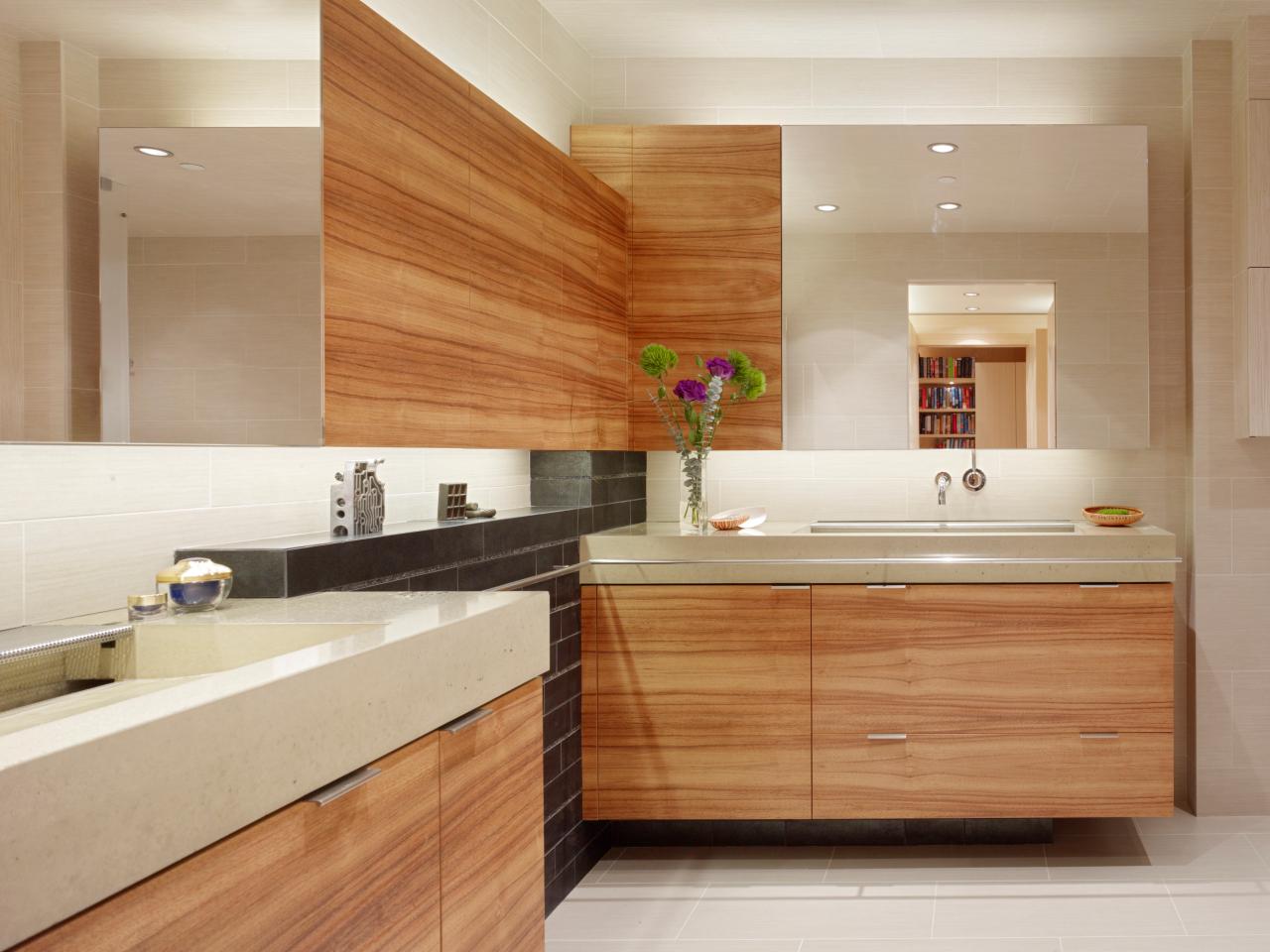
In terms of cost, concrete countertops can vary widely depending on the complexity of the design, the materials used, and the expertise of the fabricator. While they are often more expensive than laminate or tile countertops, they can be more affordable than some natural stone options like marble or granite, particularly if the design is relatively simple. However, the cost of concrete countertops can increase significantly if custom features like inlays, integrated sinks, or intricate edge details are included. It’s important to factor in these potential costs when budgeting for a bathroom remodel to ensure that the project stays within financial limits.
One of the key benefits of concrete countertops is their longevity. When properly installed and maintained, concrete countertops can last for decades, making them a long-term investment in the home. Unlike some other materials that may need to be replaced after a few years of use, concrete countertops are built to withstand the test of time. Their durability, combined with their customizable nature, means that they can adapt to changes in style and design over the years, remaining a beautiful and functional part of the bathroom for many years to come.
In terms of resale value, concrete countertops can add to the appeal of a home, particularly if they are well-designed and maintained. Prospective buyers often appreciate the unique look and durability of concrete countertops, and they can be a selling point in a competitive real estate market. However, because concrete countertops are still relatively uncommon in some areas, it’s important to consider the preferences of potential buyers when deciding whether to install them. In markets where natural stone or quartz are the preferred materials, a concrete countertop might not have the same appeal. However, in areas where unique, custom finishes are valued, concrete countertops can be a strong selling point.
Finally, one of the most compelling reasons to choose concrete countertops is the opportunity to create a truly one-of-a-kind bathroom. With so many options for customization, from color and texture to shape and inlays, concrete countertops offer a level of personalization that is hard to match with other materials. Whether you’re looking to create a sleek, modern bathroom or a warm, rustic retreat, concrete countertops can be tailored to fit your vision. The result is a bathroom that not only meets your functional needs but also reflects your personal style and creativity.
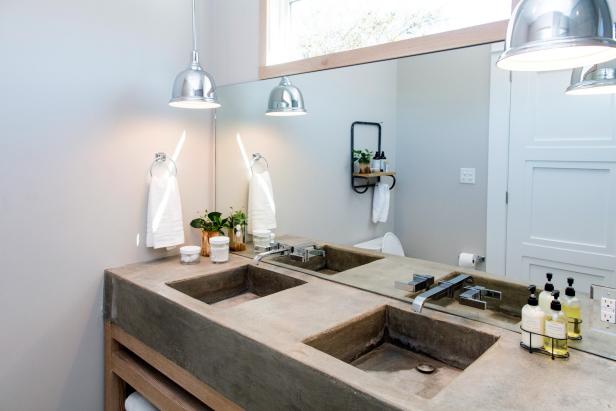
Common Mistakes to Avoid:
When installing and maintaining concrete countertops in the bathroom, there are several common mistakes to avoid. First, failing to properly seal the concrete is a major oversight. Because concrete is porous, it can easily absorb water and other liquids, leading to stains, cracks, or even mold growth. To prevent these issues, it’s crucial to apply a high-quality sealer regularly and reapply it as needed.
Another common mistake is using harsh or acidic cleaners on the concrete surface. These can damage the sealer and the concrete itself, leading to discoloration or etching. Instead, use a pH-neutral cleaner specifically designed for concrete surfaces.
Additionally, not accounting for the weight of the concrete during the design phase can lead to structural issues. Concrete countertops are heavy, and the cabinetry must be able to support the weight without sagging or collapsing. It’s important to ensure that the cabinets are reinforced if necessary.
Another mistake is overlooking the need for expansion joints, which allow the concrete to expand and contract with temperature changes without cracking. Finally, rushing the curing process can compromise the strength and durability of the countertop. Concrete needs time to cure properly, and cutting corners in this area can lead to a weaker, less durable surface.
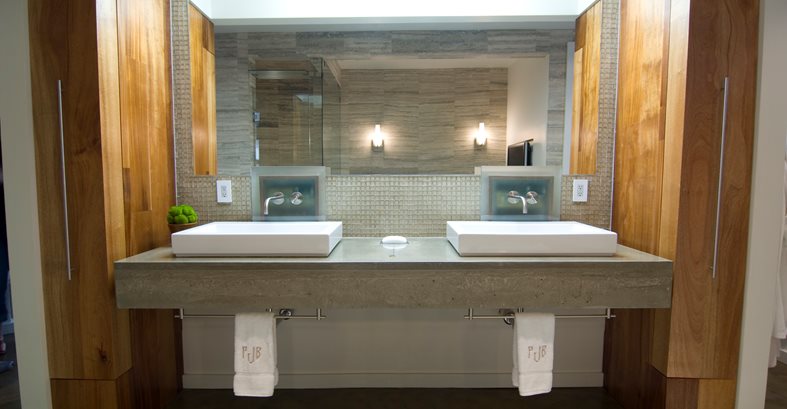
How often should I seal my concrete bathroom countertop?
The frequency of sealing depends on the type of sealer used and the amount of use the countertop receives, but generally, it’s recommended to reseal concrete countertops every one to three years. High-use areas may require more frequent sealing. You can tell it’s time to reseal when water no longer beads on the surface or if the countertop starts to look dull or stained.
Can concrete countertops crack?
Yes, concrete countertops can crack, particularly if they are not properly installed or maintained. Cracks can occur due to shrinkage during the curing process, structural movement, or extreme temperature changes. However, most cracks are minor and can be repaired with a concrete patch or filler. Proper installation, including the use of reinforcement and expansion joints, can minimize the risk of cracking.
What are the color options for concrete countertops?
Concrete countertops can be customized with a wide range of color options. Pigments can be added to the concrete mix to create virtually any color, from natural earth tones to vibrant, bold shades. Additionally, staining or dyeing can be used to achieve specific color effects or to enhance the natural variations in the concrete. The color can also be altered with the use of aggregates like glass or stone.

Are concrete countertops environmentally friendly?
Concrete countertops can be an environmentally friendly option, especially if made with locally sourced materials and recycled content. Concrete itself is made from natural materials, and the production process has a relatively low environmental impact compared to other materials like granite or quartz. Additionally, the durability of concrete means that it won’t need to be replaced as frequently, reducing waste over time.
How do I clean and maintain my concrete countertop?
To clean and maintain a concrete countertop, use a pH-neutral cleaner and avoid harsh or acidic cleaning products that can damage the sealer. It’s also important to wipe up spills promptly to prevent staining. Regular resealing is necessary to protect the surface from moisture and stains. For long-term maintenance, avoid placing extremely hot items directly on the countertop, and use cutting boards to prevent scratches.
Can I install a concrete countertop myself?
While it is possible to install a concrete countertop as a DIY project, it requires a significant amount of skill and experience. The process involves designing the form, mixing and pouring the concrete, and properly finishing and sealing the surface. It’s important to be aware of the weight and structural requirements, as well as the curing time needed for the concrete. If you’re not confident in your abilities, it’s recommended to hire a professional to ensure the best results.
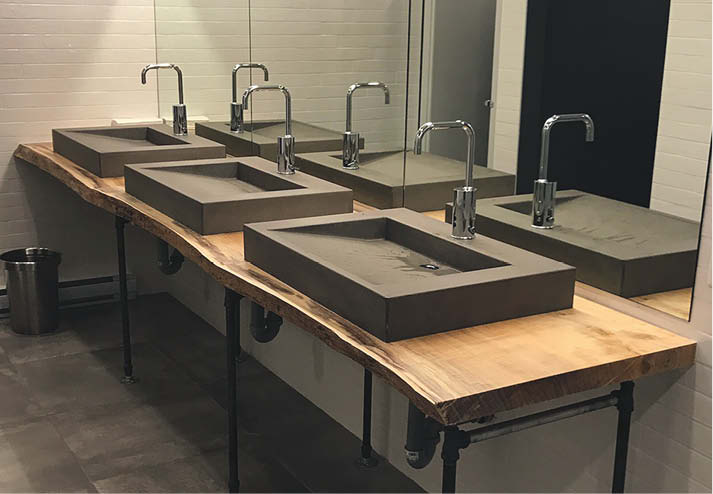
Make a Pre-Cast Concrete Counter Top

Beautiful Bathroom with Concrete Countertops
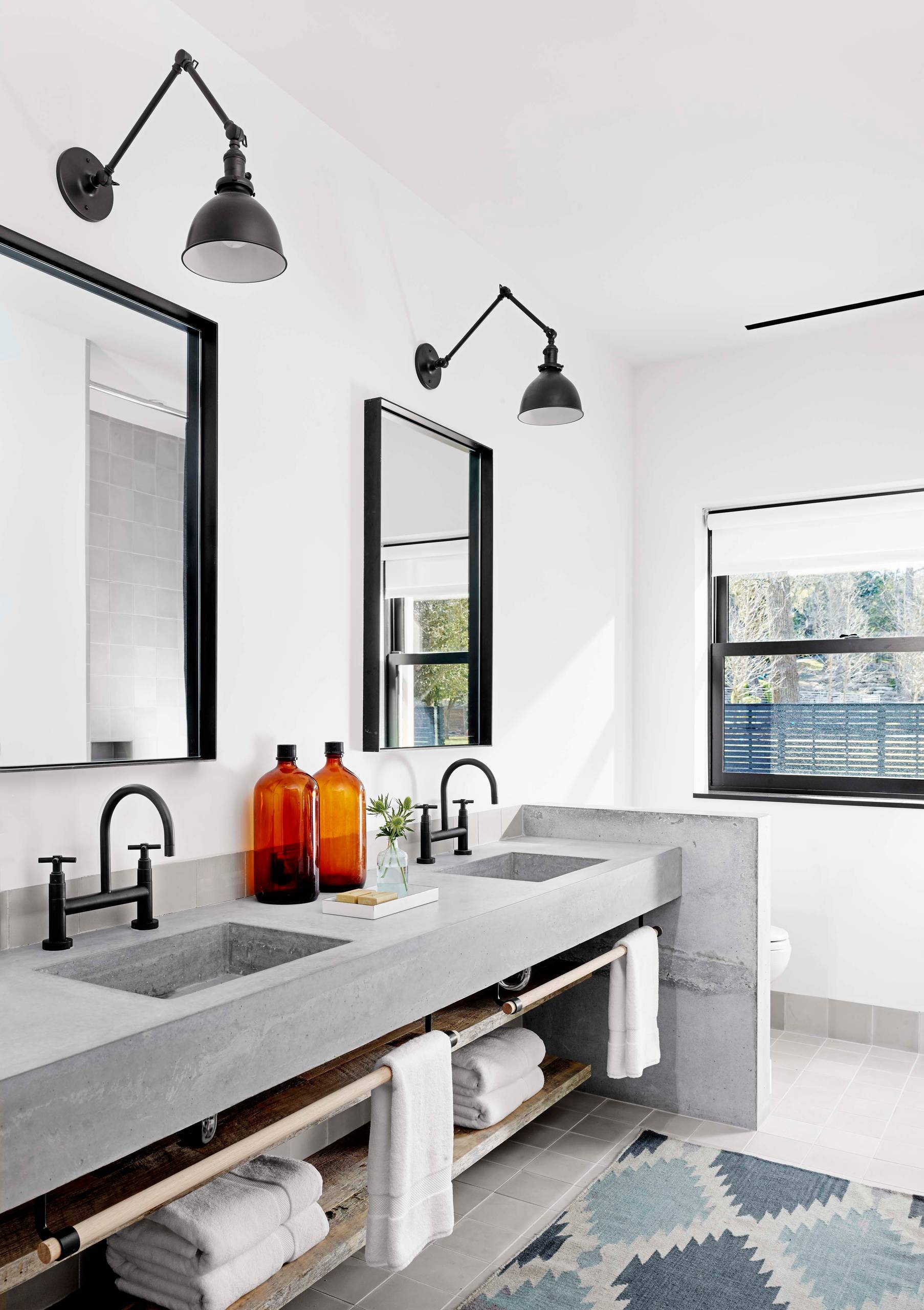
Concrete Bathroom Vanity Countertops

Related articles: